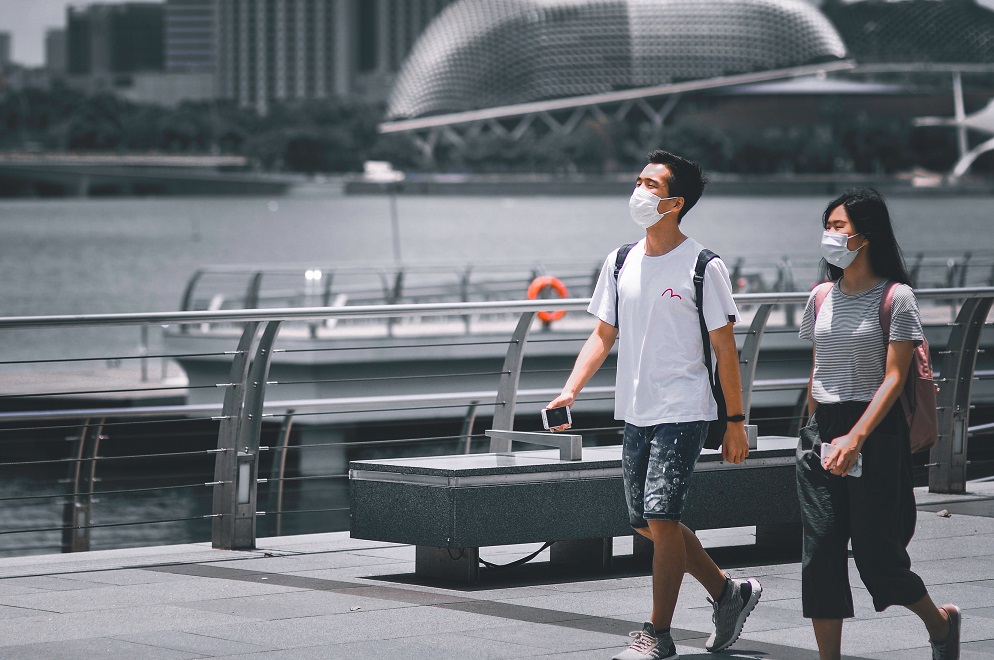The first RCT study published on masks in the context of this pandemic found no statistically significant differences regarding the protection of their users.
Historical background
For decades research has tended to indicate that the use of masks to combat respiratory viruses in the community had no advantages. Recently, as early as May 2020, the latest systematic review with ten top-quality RCTs was included in the WHO’s Epidemic and Pandemic Public Health Measures and concluded:
“No evidence has been found that the masks are effective in reducing the transmission of confirmed influenza in the laboratory.”
The only RCT study with cloth masks (2015) even suggests that they could increase the risk of infection.
During the pandemic, based on some lower quality studies suggesting protection, the WHO made a change of recommendations. Even cloth masks (with three or more layers) could have a very significant effect in reducing contamination.
Despite WHO reservations about the quality of studies supporting this change, many health organizations and countries were far more enthusiastic about adopting masks as a key tool in combating the pandemic.
However, lower quality evidence such as expert opinion, laboratory studies or even observational studies suffer from high bias and cannot measure causal relationships. Only RCTs can do this.
Summary of the study
Participants
6 024 adults were randomly assigned to two groups and accompanied from 2 to 4 May until 2 June 2020. 4862 participants (80.7%) completed the study.
Intervention
Encouragement to follow social distancing measures for both groups.
No mask recommendation (control group), or a recommendation to wear a mask when away from home (mask group) among other people.
Type of mask used
“The facial masks provided to the participants were high quality surgical with a filtration rate of 98%”
Masks and instructions for use
50 surgical masks and instructions for proper use were provided
In the study, each participant wore, on average: “1.7 masks per day of the week” and “1.3 per day of the weekend”.
Results
There were no significant statistical differences between the groups.
The infection occurred in 42 participants (1.8%) in the mask group and 53 (2.1%) in the control group.
No statistically significant differences were found in the infection by other respiratory viruses either.
Limitations
The masks used are high quality surgical masks, different from many that are used (e.g. cloth masks). The average renewal of masks was over 1.5 per day, probably very different from the usual renewal/cleaning. In addition, the participants were specially instructed for correct use (93% of the participants said they wore the masks “as recommended” or “predominantly as recommended”).
On the other hand, this study only investigates user protection. No conclusions can be drawn about the protection that the use of masks may have on others.
The study involved a region with a relatively low rate of transmission, no definitive conclusions can be drawn for places where transmission is higher.
The results are inconclusive, compatible with a 46% reduction to a 23% increase in transmission.
Main findings of researchers
The study suggests that, under the conditions in which it was performed, the use of a surgical mask does not significantly reduce the likelihood of infection of its user.
“Our results suggest that the recommendation to wear a surgical mask outside the home, among other people, did not reduce, at conventional levels of statistical significance, the incidence of SARS-CoV-2 infection in mask wearers in an environment where social distancing and other public health conditions were practiced…”
Implications of the study
Although no conclusions can be drawn about the protection masks can give to third parties, it indicates that the protection of the wearer, if any, will certainly be much less than some studies suggest.
Others studies are also needed to assess: other masks in circulation, open and closed environments, regions of greater transmission, the protection of others.
Many have strong convictions on the subject based on personal perceptions, editorial guidelines or the opinions of health professionals. In some countries masks have also become a symbol of ideological or political affiliations.
It is important not to have dogmatic positions and to let science continue to test the various hypotheses. After all, this is the great advance of the scientific method: to prevent our personal beliefs from preventing us from advancing in the search for knowledge.
For now, whenever we wear a mask, we should not feel overprotected and follow all the rules of use.

